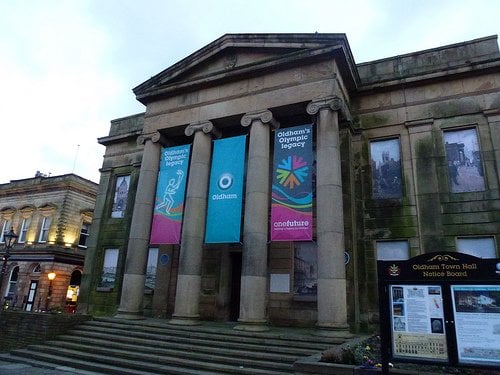
Photo: Mickey via Creative Commons 2.0
A property boom
Steve Mannix and Sean Egan advise arts organisations to watch out for the many council-owned buildings that will be coming on to the market to buy or rent.
The radical redrawing of local government finances has created many challenges for the arts, but on the other hand the localism and ‘big society’ agendas are creating opportunities for the sector. This has come about partly because local authorities are looking to provide support to the arts in different ways, but the 2007 Quirk Review has also led to the community asset transfer programme and other policy shifts.
In the arts we have always struggled to find the resources to secure or convert buildings and spaces to meet our requirements. The Lottery has made a difference but many buildings and equipment purchases are starting to look a bit tired (or are simply coming to the end of their life) and so the challenge now is about how to sustain capital investment. The nature of our work and how we deliver it is naturally changing and evolving but we still need to address the capital requirements of our organisations. Another issue is that in many towns and cities there is little affordable space for short and long-term use.
Councils are looking for partners who share their values and ethos to take on these facilities and keep services running and spaces alive
We have all worked in different forms of partnerships for years but in the last year or so the relationship with local authorities has started to change. As resources have become more limited, different delivery models have emerged for the arts and the voluntary sector – service level agreements, contracting out, community interest companies, community trusts, action zones – dare we say – payment by results, you name it they are all being looked at.
Buildings and the physical environment have always played an important part in the social and cultural life of our country with The Miners’ Institutes, Carnegie libraries, our great Victorian museums and galleries and the civic centres and theatres of the 1960s and 1970s. They are all important symbols of our society. However, in these austere times they are becoming increasingly costly to run or difficult for elected councillors to justify paying for when faced with other budget challenges. Many councils are looking to transfer buildings from their ownership in the next two years – shops, garages, community centres, libraries. You name it, they are all waiting to go on the market.
Councils are looking for partners who share their values and ethos to take on these facilities and keep services running and spaces alive. These can be either for sole use by the arts or the third sector or in new partnerships with developers and others, such as universities and housing associations.
Arts and cultural organisations should be looking at sharing facilities with others from the third sector. Peppercorn or low rents are available – even purchases at favourable rates and extended terms. Councils might be able to support with other resources through planning and capital funds. Independent not-for-profit organisations can access funding that a council or other partner cannot; together a mixed funding base emerges and there may be the potential to start to earn income (such as from renting space to others or through trading with cafés or other facilities).
The arts uniquely bring people together, and through new partnerships we can work with the public and private sector to ensure spaces and services remain in use for local people.
Local community initiatives
- Community asset transfer: Rule changes enable and encourage councils to make council-owned properties available for community organisations and groups. Councils are developing policies to enable organisations to bid for properties – one requirement is usually the organisation is not-for-profit, a plus for arts charities.
- Community asset registers: As part of community asset policies many councils will make available lists of properties that are available for bids.
- Community infrastructure levy: Planning authorities may now levy this charge on new developments in their area. It is seen as superseding some Section 106 planning gain conditions. It is not charged on developments where a charity is the landlord. The money raised is for infrastructure development which can involve arts-related projects.
- Enlightened planning policies: Some councils see the arts as a key element to be included in developments and encourage developers to include arts activities so that there is increased provision in the area.
Steve Mannix is a consultant working with a range of arts clients.
Sean Egan is Head of Arts and Media at Bates Wells Braithwaite.
Join the Discussion
You must be logged in to post a comment.